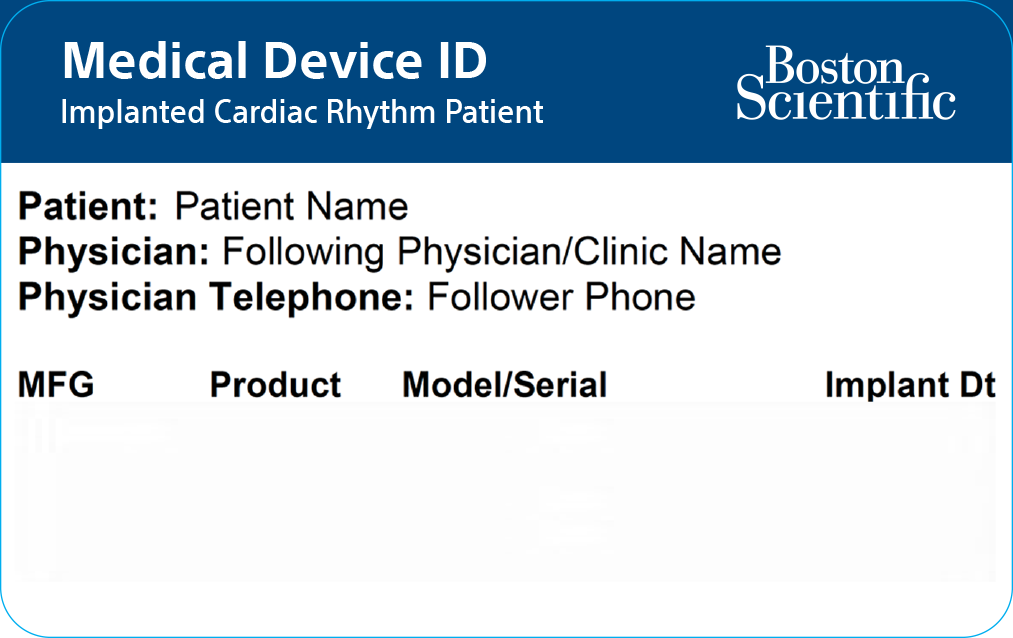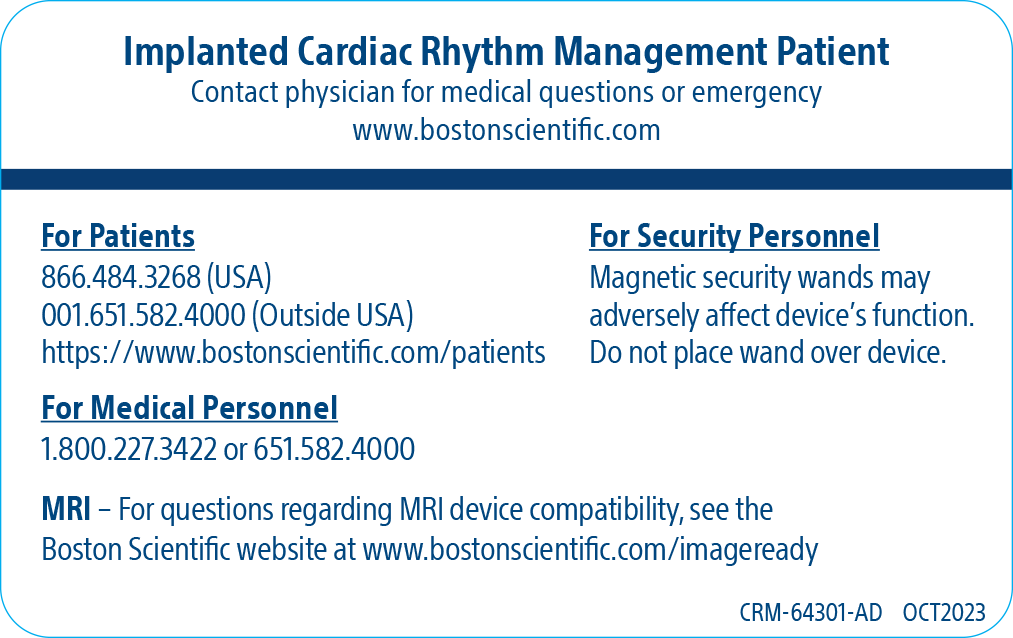
Post-recovery guidelines
After your procedure, be sure to ask your doctor any questions you may have about your device, heart rhythm, or medication. In addition, your healthcare team will give you post-operative directions, which may include:
- Call your doctor if you have any swelling, redness or discharge around your incision, your heart rate drops below the minimum set for your pacemaker or you have a fever longer than two or three days
- Keep tight clothing and jewelry away from the skin over your device
- Avoid rubbing your device or the surrounding chest area
- Follow your doctor’s instructions for exercise and bathing
- Continue medications as instructed by your doctor
- Tell your other doctors, dentists, and emergency personnel that you have an implanted device and show them your Medical Device Identification Card
Activities and exercises
Your doctor will help you decide what level of activity is best for you. Some general guidelines include:
- Avoiding rough contact that could result in blows to your implant site
- Asking your doctor if it is safe for you to do activities that could hurt you or others if you lose consciousness, like driving, swimming alone or climbing a ladder
- Avoiding supporting your weight with your arms during sexual activity while your incision is healing
- Avoiding strenuous activity, especially lifting and other activities that use your upper body. This gives the lead(s) time to firmly attach to your heart tissue and allows the incision time to heal
- Avoiding rough contact that could result in a blow to your implant site
- Limit certain arm movements that could affect your incision site
- Avoiding lifting heavy objects until your doctor tells you it is okay
Medical Device ID Card
Whether you’re going away for the weekend or running a quick errand, it’s important to carry your Medical Device Identification Card with you at all times. Your Medical Device ID Card contains your name, your doctor’s name and phone number, and the model numbers of your device and leads. In an emergency, the card will alert medical and security personnel that you have an implanted device. You will be given a temporary Medical Device ID Card when you receive your pacemaker. Your permanent card will be mailed to your home approximately six to eight weeks after your implant.
Medical Device ID Card - Front
Medical Device ID Card - Back


Moving or selecting a new doctor
Please tell us if you move or get a new doctor. You can use our online patient portal or call us at 1-800-728-3282 to update your record, and we will send you a new ID card.
Regular follow-up visits
Many pacemakers can be checked by the doctor’s office remotely using wireless technology. This allows your doctor to access data about your heart rate and rhythm, how your pacemaker is working, adjust settings if necessary and check its battery life.
Remote technology may mean fewer trips to the doctor. But, you’ll still need to be seen in person for follow-up visits so your doctor can adjust your pacemaker to best meet your needs. A typical follow-up visit takes about 20 minutes.
When to call a doctor
Your doctor will provide guidelines for when you should contact him or her. In general, call your doctor if you:
- Have a heart rate that drops below the lowest rate set for your pacemaker
- Develop symptoms of an abnormal heart rhythm and have been told to call
- Notice swelling, redness or drainage from your incisions
- Start a fever that lasts longer than two or three days
- Have questions about your device, heart rhythm or medications
- Plan to travel or move so you can form a care plan for while you are away
- Notice anything unusual or unexpected, like new symptoms or symptoms you had before your pacemaker